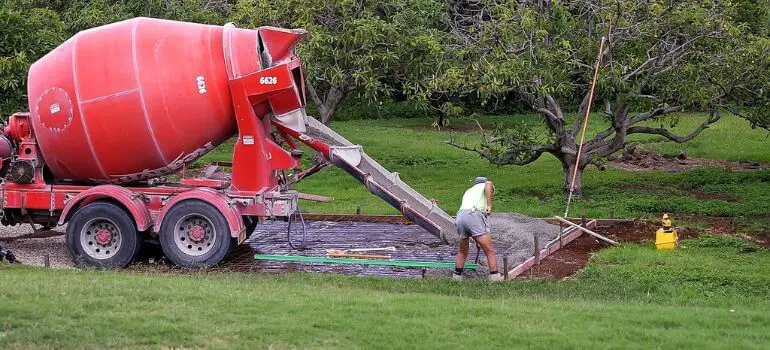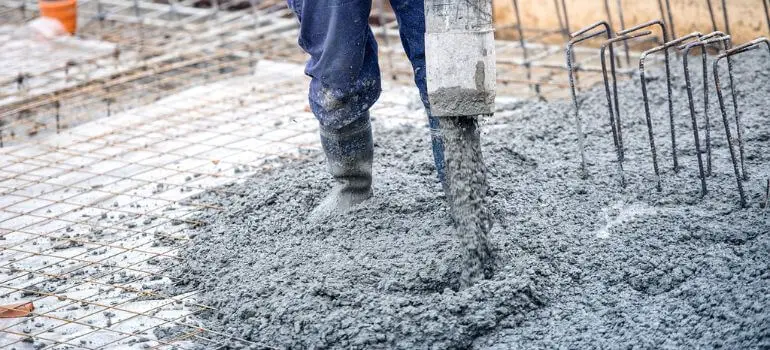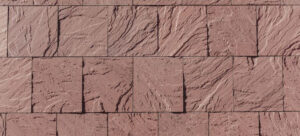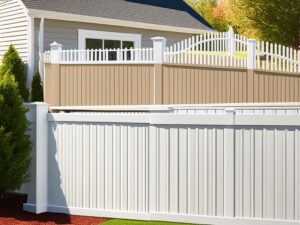Introduction
Mortar, an essential component in construction, requires adequate setting time for optimal strength, especially considering rain exposure. This article explores how long mortar needs to set before it can withstand the elements.
Understanding Mortar
Mortar, available in various types like cement, lime, or mixed, has specific setting processes. The composition of mortar plays a crucial role in its setting time and durability.
Factors Influencing Mortar Setting
The setting time of mortar is influenced by a range of factors that can affect its strength and durability. Understanding these factors is crucial for ensuring that the mortar sets properly, especially in varying weather conditions. Here are some key factors:
- Type of Mortar: Different types of mortar have different setting times. For example, quick-set mortar can cure faster than traditional types. The choice of mortar should be based on the project requirements and environmental conditions.
- Temperature: Temperature significantly affects the setting time of mortar. High temperatures can cause the mortar to set quickly, sometimes too quickly, leading to potential cracking. Conversely, low temperatures can slow down the curing process, requiring a longer setting time before the mortar is stable and strong.
- Humidity and Moisture Levels: High humidity can prolong the setting time of mortar. Excessive moisture in the air prevents the mortar from drying at the intended rate, leading to delays in setting. On the other hand, very dry conditions can cause the mortar to set too quickly, which might reduce its effectiveness and bonding strength.
- Water-to-Cement Ratio: The proportion of water to cement in the mortar mix plays a critical role in setting time. Too much water can weaken the mortar and extend the setting time, while too little water can lead to a fast but weak setting. Achieving the right balance is key for optimal setting time and strength.
- Wind Conditions: Wind can affect the setting time of mortar by either drying it out too quickly or cooling it down, depending on the temperature. In windy conditions, it’s essential to take measures to protect the mortar, such as using windbreaks or adjusting the mix to compensate for the effects of the wind.
- Sunlight Exposure: Direct sunlight can cause the mortar to dry and set faster. In some cases, this can be beneficial, but it can also lead to uneven setting or cracking if the mortar dries too quickly.
- Additives: The use of additives in mortar can alter its setting time. For example, accelerators can speed up the setting process, while retarders can slow it down. The choice of additives should be made based on the specific requirements of the project and the expected weather conditions.
How Long for Mortar to Set Before Rain
Generally, it’s recommended that mortar should set for at least 24-48 hours before being exposed to rain. This duration allows the mortar to reach an initial cure, which is crucial for its strength and durability. However, this guideline can vary significantly based on the type of mortar being used. For instance, fast-setting mortar might be ready to withstand rain in a shorter period, while traditional mortar types might require a longer setting time.
Protecting Mortar from Rain
To protect freshly applied mortar from rain, immediate measures such as covering the area with a waterproof tarp or plastic sheeting can be effective. For long-term protection, consider using waterproofing additives in the mortar mix, which can help resist moisture penetration even after the mortar has set. Additionally, scheduling mortar work during dry weather forecasts can significantly reduce the risk of rain damage.
Tips for Speeding Up Mortar Setting
In construction projects, time is often of the essence, and finding ways to speed up the setting time of mortar can be crucial. However, it’s important to do this without compromising the quality and strength of the mortar. Here are some effective tips for accelerating the setting time of mortar:
- Use Accelerating Additives: There are various additives available that can be mixed into the mortar to speed up the curing process. These accelerators are designed to increase the rate of the chemical reactions that cause the mortar to set.
- Adjust the Water-to-Cement Ratio: Decreasing the water-to-cement ratio in the mortar mix can help it to set faster. However, it’s crucial to maintain the balance as too little water can weaken the mortar.
- Opt for Rapid-Setting Mortar: Some mortar products are specifically formulated to set more quickly than standard types. These are ideal for projects that are on a tight schedule.
- Control Environmental Conditions: If possible, control the environment where the mortar is being applied. Using heaters in a cold environment or fans in a humid environment can help the mortar to set more quickly.
- Increase the Temperature: Warmer conditions can accelerate the setting time. If you’re working in cooler weather, consider using heating blankets or lamps to raise the temperature of the area where the mortar is being applied.
- Use Warm Water: Mixing the mortar with warm water can increase the temperature of the mix, leading to faster setting. Be cautious not to use water that is too hot, as it can adversely affect the mortar.
- Pre-wet the Substrate: Dampening the surface onto which the mortar will be applied can prevent it from absorbing too much water from the mortar, allowing the mortar to retain the moisture it needs to cure faster.
- Protect from Wind and Sun: If the mortar is drying too quickly due to wind or direct sunlight, which can lead to improper curing, use shielding methods like windbreaks or shades to protect the area.
- Plan for the Weather: If possible, schedule mortar work during warmer, drier days as these conditions are more conducive to faster setting.
- Compact the Mortar: Properly compacting the mortar during application can reduce the air content, which can help in faster setting.
Challenges of Rain on Setting Mortar

Rain can pose significant challenges to setting mortar. If mortar is exposed to rain before it has sufficiently set, it can lead to weakened structural integrity, reduced bonding strength, and an increased risk of future water damage. To prevent these issues, it’s essential to adhere to the recommended setting times and take protective measures against unexpected rain.
Case Studies
Real-world case studies can provide valuable insights into the importance of allowing mortar to set before rain exposure. For example, a construction project that successfully waited the recommended 48 hours before a rainstorm experienced no mortar-related issues, whereas another project that rushed the process faced significant repairs due to rain damage.
Expert Opinions
When it comes to setting mortar, especially in varying climatic conditions, expert insights can be invaluable. Here’s a compilation of advice and opinions from seasoned construction professionals, providing a deeper understanding of best practices for working with mortar:
- Importance of Proper Mixing: Experts stress the significance of correctly mixing mortar. An improper mix can lead to longer setting times and weaker structures. It’s essential to follow manufacturer guidelines for the specific type of mortar being used.
- Monitoring Weather Conditions: Many professionals advise being vigilant about weather forecasts. Since weather plays a crucial role in the setting process, planning the work around favorable weather conditions can prevent many issues related to setting.
- Choosing the Right Mortar Type: Depending on the project’s requirements and environmental conditions, selecting the appropriate type of mortar is critical. Experts often suggest using fast-setting mortars for projects with tight deadlines, provided they meet the structural requirements.
- Use of Additives: While additives can be useful in altering the setting time, experts warn against over-reliance on them. The use of additives should be balanced and as per the guidelines, as excessive use can alter the properties of the mortar detrimentally.
- Controlling the Setting Environment: Experienced professionals frequently use methods to control the environment where mortar is applied, such as using tents or temporary enclosures to maintain consistent temperature and humidity levels.
- Testing and Adjustments: Conducting tests and making adjustments based on the specific conditions of the project site is often recommended. This includes testing the mortar mix for setting time under the expected environmental conditions.
- Avoiding Overworking the Mortar: Overworking the mortar, such as by excessive mixing or reworking, can negatively impact its setting time and strength. Professionals recommend a precise and efficient approach to applying mortar.
- Respecting the Curing Process: Emphasizing the importance of the curing process, experts often advise against rushing this stage. Proper curing is essential for the strength and durability of the mortar.
- Training and Experience: The skill and experience of the workforce applying the mortar can significantly impact the outcome. Investing in training and using experienced workers can lead to better and more efficient results.
- Site-Specific Solutions: Finally, experts often highlight the importance of site-specific solutions. What works in one climate or project might not be suitable for another. Tailoring the approach to each unique situation is key for optimal results.
FAQs
Temperature plays a crucial role. Higher temperatures can speed up the setting time, while lower temperatures can slow it down.
While additives can help, their effectiveness varies based on the type of mortar and environmental conditions.
Rain on unset mortar can lead to decreased bonding strength, increased susceptibility to water damage, and potential structural weaknesses.
A simple method is to press a small object into the mortar; if it leaves a clean, shallow impression, the mortar is likely set.
Mortar mixes with waterproofing additives or specialized fast-setting formulas are generally more resistant to rain.
Conclusion
Understanding the correct setting time for mortar before rain exposure is crucial in construction. Factors like mortar type, weather conditions, and protective measures play significant roles in ensuring the mortar’s durability and strength. By adhering to best practices and leveraging expert advice, construction professionals can effectively manage the challenges posed by rain and ensure the longevity of their projects.



